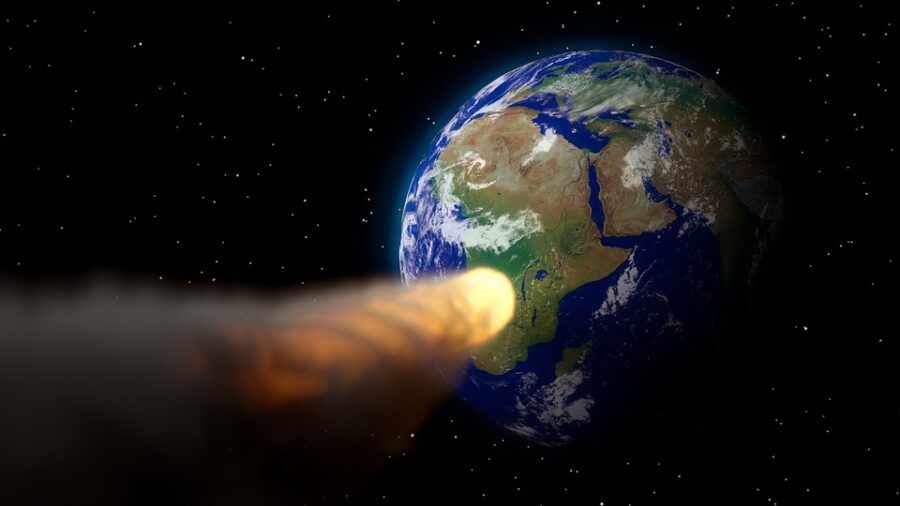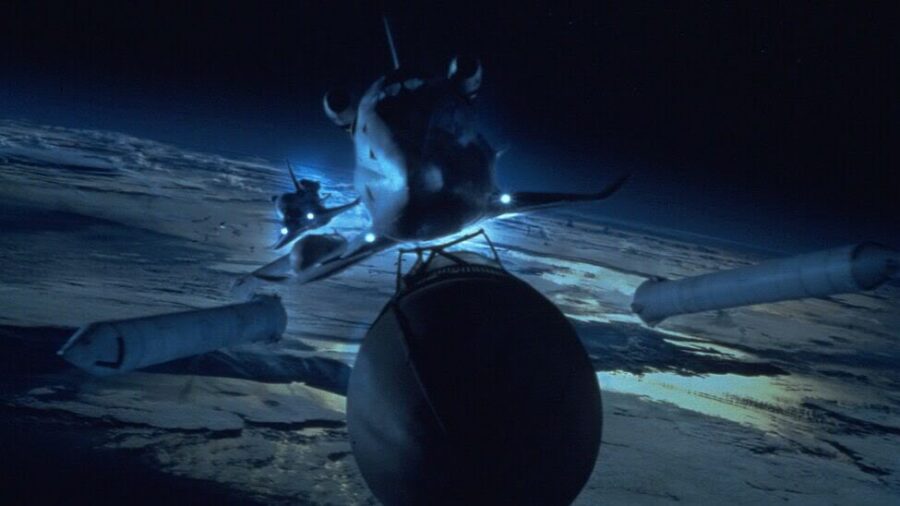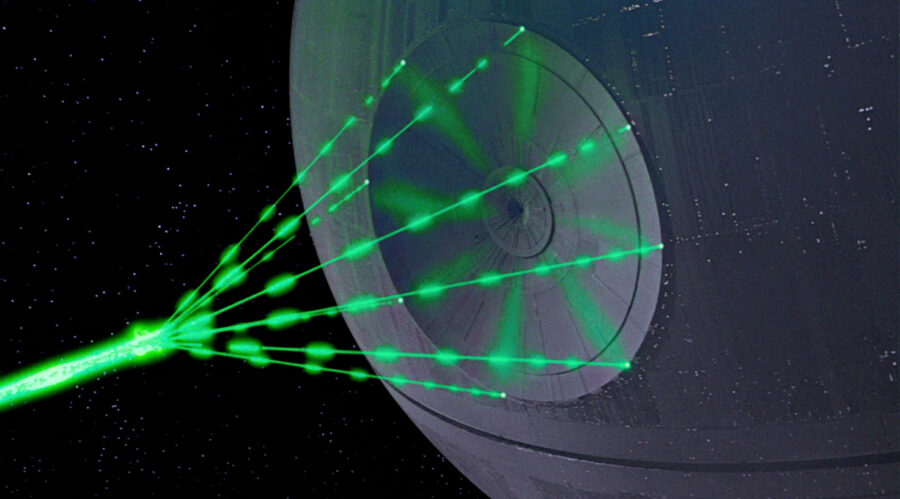Killer Asteroids: How Long Until Earth Is Destroyed And How To Stop It
What are the odds of another major catastrophe caused by an asteroid or meteorite?
This article is more than 2 years old

Remember dinosaurs? Those big ass reptiles that used to roam the Earth? No, you don’t, at least not in person. (And no, I don’t care how many times you’ve seen Jurassic Park, that doesn’t count.) You never came face to face with them because roughly 65 million years ago, give or take, they were wiped out at the end of the Cretaceous Period. The general working theory is that the impact of a asteroid or other celestial body led to widespread climate change, which caused a major extinction event.
It sounds like the stuff of Hollywood blockbusters, but if it happened once, it stands to reason that it could happen again, even if the chances are infinitesimally minute. What are the odds of another major catastrophe caused by an asteroid or meteorite? How destructive could it be? And perhaps most importantly, can we stop it?
Most asteroids, meteorites, and other flying space rocks—known as Near Earth Objects—that come our way burn out in our atmosphere and wind up harmless. There are 190 known impact craters on the planet, ranging in age from a few hundred years old to hundreds of millions, and in size from a few kilometers in diameter to hundreds.
Small objects often hit Earth, usually without much damage, though it does happen occasionally. The most well-known are probably Tunguska Impact, which happened in Russia in 1908. Attributed to a meteoroid, a large explosion flattened 80 million trees and may have killed three people. There’s also the Ch’ing-yang event of 1490, in which a meteor shower over China is said to have caused numerous deaths. Most of the damage is caused by airbursts, explosions as the object enters the thicker portion of our atmosphere, which can cause a shockwave that can break windows and .

The most recent case of an impact causing notable destruction was in Russia in 2013. In Chelyabinsk, a region in the Ural mountains, a superbolide, an extremely bright meteor, entered the atmosphere and exploded. There were no deaths, but there were reports of destruction and injuries.
NASA and other space agencies track thousands of NEOs every year. Recently, in April 2020, an asteroid the size of a house passed by Earth. Scientists estimate a NEO of this size could impact Earth with a force many times greater than the bomb dropped on Hiroshima. Bigger objects could, of course, be even more destructive.
At a certain point, they would have global implications. Not only would they destroy the area of impact, they can cause earthquakes and tsunamis. Dust clouds that could block out the sun, leading to widespread climate change that would likely kill most life on Earth. One big enough might even affect the Earth’s rotation.
The question of the day becomes, how can we stop a potential asteroid strike that could devastate our planet? Can we even?
You can use this fun tool from Purdue University to calculate the impact objects of different sizes, densities, and speeds might have.
Fortunately, people much smarter than us are on the case. So, how exactly can humanity divert an asteroid and save the day? To be honest, most of these sound weirdly simple. They generally revolve around the same principles and accomplish the same thing, though they use different methods. But while the idea may be simple in theory, it’s the execution that gets tricky, especially as usually involve deep space travel.
Nuke It

In movies, what do humans do when presented with a massive, unknown threat? The first response is generally to nuke it. Same goes for a killer asteroid. The idea isn’t necessarily to blow it to smithereens. That could potentially cause it to split into multiple pieces which may then still impact Earth and cause widespread destruction. No, the plan is to detonate a nuclear bomb near the asteroid. This blast could cause a loss of mass and force the NEO to change trajectory. Covering such a great distance, even a minor, down to millimeters alteration may be enough to push it off a collision course with Earth.
Shoot The Asteroid With Lasers

Blasting an asteroid with lasers sounds like the most sci-fi thing ever, right? But laser ablation is a realistic option. It’s essentially exactly what it sounds like. Space agencies would use solar-powered lasers to vaporize some of the asteroid and break of pieces. As these pieces break off, that force would cause the NEO to change speed and trajectory, ideally enough so that it doesn’t impact Earth and destroy life as we know it. And it has the added bonus of making a sweet based-on-a-true-story movie later on.
Pool With Planets

It’s definitely not that simple, but playing pool is the basic underlying idea. Some astronomers believe we can deflect an NEO by essentially running a kinetic impactor, an unmanned space craft, into it to knock it off course.
There’s even a precedent to back this up. In 2005, NASA launched the Deep Impact mission—no, it has nothing to do with the movie—which sent a probe on a collision course with a comet in order to study it’s composition. Even the relatively small probe was moving fast enough to generate enough force to force the comet slightly off course.
It may also be possible to accomplish something similar by essentially throwing large rocks at the NEO using thrusters or a catapult-type tool. All in all, this idea sounds a little bit like playing pool with an asteroid. Which, if you’ve ever seen the Red Dwarf episode “White Hole,” you’re familiar with.
Asteroid Space Tug

When there’s a big ship in the harbor, what do you do? You attach a tugboat to the vessel and guide it where you want to go. One option to stop an asteroid from hitting Earth is to do something theoretically similar. You hook a powerful craft to the asteroid and use it to guide the flying space rock where you want it to do.
While promising, this does sound like it’s rather time consuming, as one article estimated it could take as long as 15-20 years to alter the course enough. A similar option is to attach a rocket engine to the NEO with the intention of pushing off course so that it harmlessly flies past our home planet.
Gravity

Gravity is one of the most powerful forces in the universe. Why not harness it to stop an asteroid from plowing into Earth? Everything has gravity, including spaceships and NEOs. One option is to pilot a massive spacecraft near offending object. The British developed something called a “Space Tractor.” Depending on the relative size of the two objects, the gravity may be enough to tug it just enough off of its trajectory so that it misses Earth. The biggest problems with this approach, however, are that it takes a long time, at least 15 years, as well as requiring a massive amount of fuel, enough to last 15 or so years.
Give The Asteroid A Paint Job

This one may sound a little out there, and that’s saying something considering what we’ve already talked about. Perhaps all it will take to prevent an asteroid from barreling into Earth is a new paint job. The theory is that painting part of the asteroid white affects the amount of radiation it absorbs the amount of light it reflects.
The idea originated with an MIT student in 2012. As the plan goes, you launch paintballs at the NEO. The initial impact would bump it slightly off line, while photons bouncing off the newly reflective surface will push it even further. Alternately, painting it a darker color could enhance radiation absorption, leading to increased heat, which could also shift its speed and course.
The Armageddon

We’ll call this one “The Armageddon.” When all else fails, we send Bruce Willis. With a team of hard-living roughnecks and ne’er-do-wells, the Die Hard star may be our last line of defense. He’ll figure out a way. If all else fails, they can crack wise and fistfight an asteroid into submission. Michael Bay should also be involved to ensure the appropriate level of gravitas.












